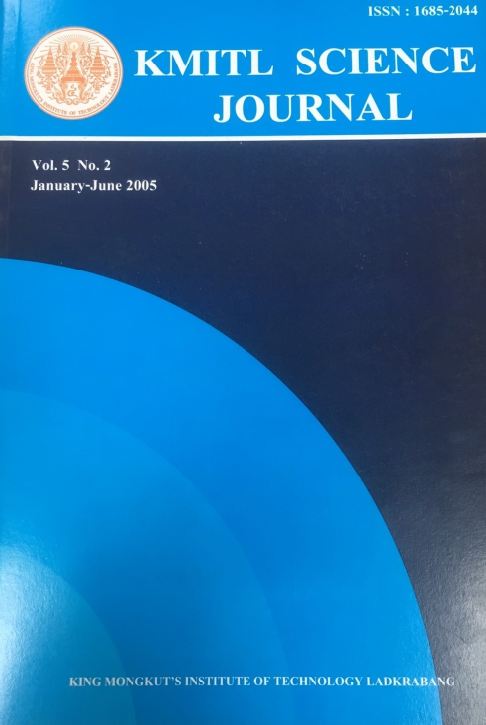Risk of Infection to Tourists Visiting an Dengue Fever Endemic Region
Main Article Content
Abstract
A mathematical model is used to study the risk of infection by the dengue virus for tourists visiting a dengue fever endemic region. The SIR (S = susceptible, I = infectious and R = recovered) model is used. The human population is separated into two populations, host and tourists. The infection rate of dengue virus depends on the immune status of the human. We assume that tourists have less immunity than the members of the host population. We use standard dynamic analysis method for analyzing mathematical model. The local stability conditions for the endemic state are determined from the value of the reproduction number for the disease. The infectious tourist fractions are calculated as a function of the length of time the tourist stay in the region. The risk of infection grows as the tourists stay longer.
Keywords: dengue disease, transmission model, tourist, stability
Corresponding author: E-mail: kppuntan@kmitl.ac.th
Article Details
Copyright Transfer Statement
The copyright of this article is transferred to Current Applied Science and Technology journal with effect if and when the article is accepted for publication. The copyright transfer covers the exclusive right to reproduce and distribute the article, including reprints, translations, photographic reproductions, electronic form (offline, online) or any other reproductions of similar nature.
The author warrants that this contribution is original and that he/she has full power to make this grant. The author signs for and accepts responsibility for releasing this material on behalf of any and all co-authors.
Here is the link for download: Copyright transfer form.pdf
References
[2] Gubler, D.J. 1998 Dengue and Dengue Hemorrhagic Fever. Clinical Microbiology Review, 11, 450-496.
[3] Kuno, G. 1995 Review of the Factors Modulating Dengue Transmission. Epidemiological Review, 17, 321-334.
[4] Lindback, H., Lindback, J., Tegnell, A., Janzon, R., Vene, S. and Ekdahl. 2003 Dengue Fever in Travelers to the Tropics, 1998 and 1999. Emerging Infectious Diseases [serial online] available from http//www.cdc.gov/ncidod/EID/vol9no4/02-0267.htm.
[5] Schwartz, E., Mendelsen, E. and Sidi, Y. 1996 Dengue Fever among Travelers. The Amerrican Journal of Medicine, 101, 516-520.
[6] TropNetEurop Sentinel Surveillance. 2002 Dengue Fever in 2002. Special Report 23.06.02.
[7] Schwartz, E., Moskovitz, A., Postasman, I., Peri, G., Grossman, Z. and Alkan, M.L. 2000 Changing Epidemiology of Dengue Fever in Travelers to Thailand. European Journal of Clinical Microbiology Infecious Diseases, 19, 784-786.
[8] Labbe, A.C., Patel, S., Crandall, I. and Kain, K.C. 2003 Molecular Surveillance System for Global Patterns of Drug Resistance in Imported Malaria. Emerging Infectious Diseases Journal, 9, 33-36.
[9] Esteva, L. and Vargas, C. 1998 Analysis of a Dengue Disease Transmission Model. Mathematical Biosciences,150, 131-151.


